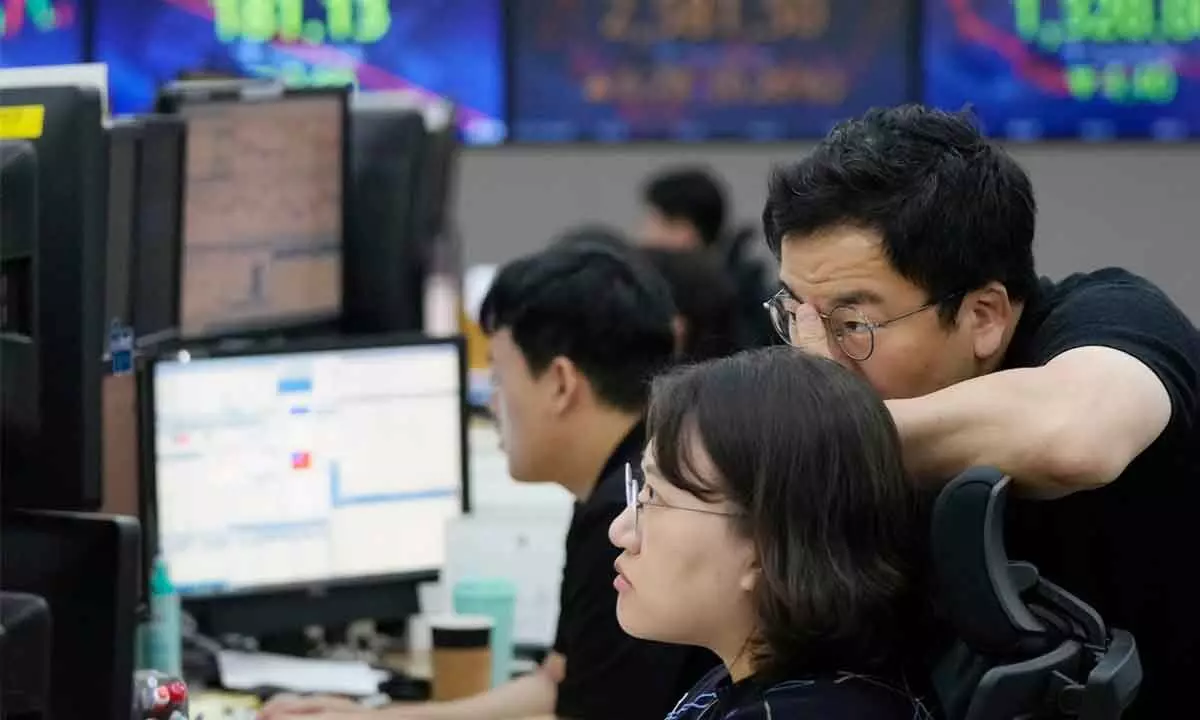Asian stocks turn sluggish ahead of Fed rate decision
Interest rates, data on economy and job market will influence markets in near term
image for illustrative purpose

Tokyo: Asian shares mostly declined in cautious trading on Tuesday ahead of the Federal Reserve’s looming decision on interest rates.
Japan’s benchmark Nikkei-225 dropped 1.1 per cent in morning trading to 33,177.75 points. Australia’s S&P/ASX 200 lost 0.5 per cent to 7,192.40. South Korea’s Kospi edged down 0.3 per cent to 2,568.12. Hong Kong’s Hang Seng slipped 0.5 per cent to 17,835.44, while the Shanghai Composite fell 0.3 per cent to 3,116.98.
The Fed is due to wrap up a two day meeting on Wednesday. Japan’s central bank will meet Thursday-Friday as observers speculate that it might gradually begin to adjust its longstanding negative interest rate policy.
“Market sentiments remained in its usual wait-and-see ahead of the Federal Open Market Committee (FOMC) meeting this week,” said Yeap Jun Rong, market analyst at IG. Monday on Wall Street, the S&P-500 edged up 0.1 per cent to 4,453.53 and the Dow Jones Industrial Average rose less than 0.1 per cent to 34,624,30. Nasdaq composite added less than 0.1 per cent to 13,710.24 points. Stocks have been see-sawing since early August on uncertainty about whether the Fed will finally end its hikes to interest rates. Higher rates have helped cool inflation from its peak last summer, but they also hurt prices for stocks and other investments, while slowing the economy. Traders almost universally expect the Fed to keep rates steady at its meeting this week. Attention will mainly focus on forecasts Fed officials will publish about where they expect interest rates, the economy and the job market to head in upcoming years. Traders are betting on a roughly 40 per cent chance the Fed will raise rates again in either November or December, according to data from CME Group. But just as much attention will be on what Fed officials say about next year, when investors expect the Fed to begin cutting interest rates. Investors crave such cuts, which typically loosen up financial conditions and give boosts to financial markets. The big question is by how much the Fed could cut. Fears are strong that rates may have to stay higher for longer to get inflation down to the Fed’s 2 per cent target. That quest has been complicated by a recent spike in oil prices. Worries about a possible recession persist though they have diminished as reports have shown the economy and job market remain resilient. One worrying factor is where bond yields are, with two-year and other shorter-term yields continuing to remain higher than longer-term yields.
That’s an unusual occurrence that has often preceded recessions in the past. Another warning signal comes from the leading economic indicators index, which looks at new orders for manufacturers, consumer expectations for business conditions and other factors that could show where the economy is heading.
When its six-month annualized rate-of-change contracts three per cent or more, it’s always been associated with a recession, according to Doug Ramsey, chief investment officer of The Leuthold Group. It’s been 15 months since the most recent such warning. In the past, the longest stretch between such a trigger and a recession was the 16 months before the Great Recession. If this matches that one, it could imply a recession beginning in October, Ramsey says. Clorox dropped 2.4 per cent after it said a cybersecurity attack caused widespread disruptions to its business. It’s still measuring the damage, but it said it expects it to be material on upcoming results. Clorox also said it believes the unauthorized activity has been contained.

